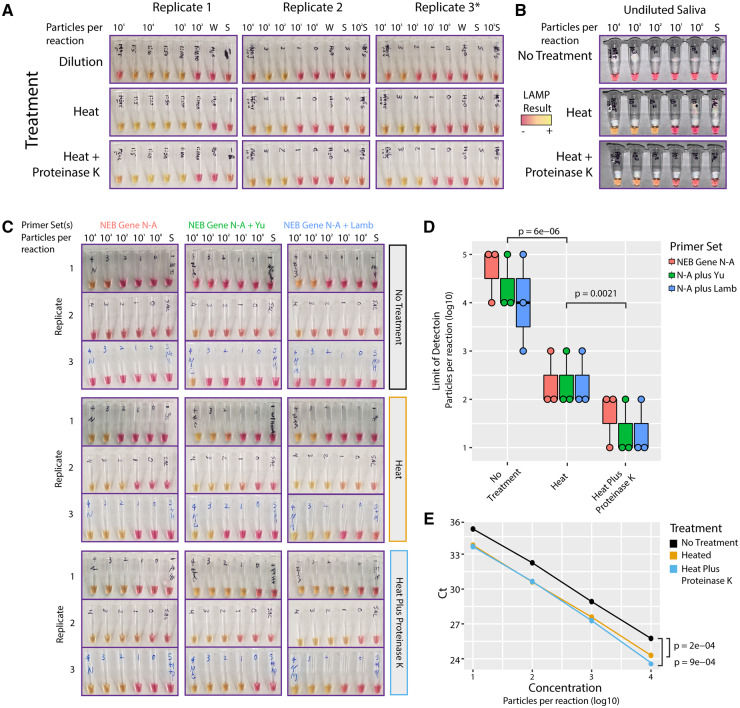Fig. 1.
Dilution, heat, and proteinase K treatments improve SARS-CoV-2 detection from saliva. (A), Dilution of particle-containing saliva into water improved LAMP detection by at least two orders of magnitude from undetectable to ∼103 particles per reaction. Heat treatment and heat treatment plus proteinase K further increased LAMP sensitivity to ∼102 viral genome equivalents per reaction. *Replicate 3 used Lamb et al. primers but gave nearly identical results to NEB Gene N-A primers. (B), Heat treatment with or without proteinase K increased LAMP sensitivity from 106 to ∼102 viral genome equivalents in undiluted saliva. (C), Multiplexed primers improved LAMP sensitivity. LAMP reactions using NEB Gene N-A primers alone or in combination with Yu et al. or Lamb et al. primers are shown. S = negative control saliva. Viral particles per reaction are indicated. (D), Saliva pretreatments significantly improved LAMP sensitivity. Heat treatment improved limit of detection (P = 6e-6, t-test, two-tailed vs ‘No Treatment’). Proteinase K treatment further improved heat treatment (P = 0.002, t-test, two-tailed vs ‘Heat’). Multiplexed primers increased the frequency of detection at ∼101 particles/reaction. N = NEB Gene N-A. (E), RT-qPCR on crude saliva using the CDC N1 probe showed increased sensitivity with either heat or proteinase K treatment (P < 1e-3 for either treatment, two-tailed paired t-test).

